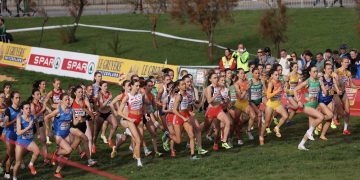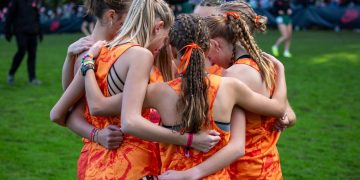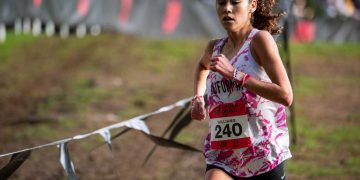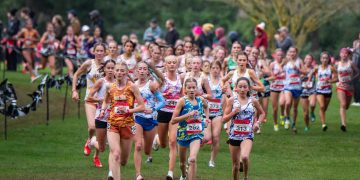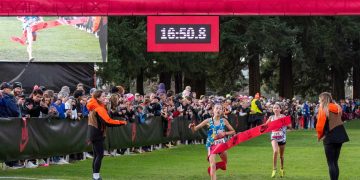Alphabetically speaking, consider all the colliding considerations:
(A) The expert analysts had told us that Japan’s Toshikazu Yamanishi (men’s 20K) and Masato
Kawano (men’s 50K) and China’s Hong Liu (women’s 20K) were the hot favorites to
stroll off with Olympic racewalking golds.
(B) For the first time, for Americans in locales where legalized sports wagering was now a
possibility, cash-backed Olympic prognostication on Olympic outcomes was now
a lively option.
( C ) But you had to step lively if you hoped to plunk down a few bucks on Yamanishi, Kawano,
Liu – or anyone else – because all three Olympic walks were jammed into a 26-hour time
frame spread over the final Thursday and Friday of the Games.
( D ) Then again, you’d have been better off staying home if you really thought Messrs. Y & K
and Mrs. L were, sure enough, candidates to merit the investment of your hard-earned cash.
Yamanashi placed third, Kawano sixth, and Liu third. Only “win” wagers were being taken, no place or show.
(E) The golds, instead, went too long, long, and longer-shots Massimo Stano of Italy (men’s 20K in 1:21:05),
Dawid Tomala of Poland (men’s 50K in 3:50:08) and Stano’s Team Italy colleague, Antonella
Palmisano (women’s 20K in 1:29:12.)
(F) None came close to Olympic or world-record clockings for an obvious rationale. The walk
routes (one-K loops for the 20K races, 2K loops for the 50K through Sapporo’s Odori Park)
were stretched-out steambaths.
( G) This was not child’s play. Stano is 29, Tomala 31, and Palmisano (a winner on her birthday) 30.
( H ) The three racewalks and the two marathons had been moved from
Tokyo to Sapporo, 500 miles north on Hokkaido island to allow a degree of climatic comfort; it didn’t make a whole lot of difference – it gets pretty steamy in Hokkaido, too. There were more than enough degrees for all the racers.
( I ) Once again, the racewalking phase of the Olympic program was gloriously global.
All corners of the planet sent their speediest pedestrians.
( J ) So, if you were reckoning continental champions, the men’s 20K claimants would have been
Stano (gold medal, representing Europe), Japan’s Koki Ikeda (silver medal, as the top man of Asia), Mexico’s Andres Olivas Nunez (11th, North America), Ecuador’s Brian Pintado (12th, South America), Australia’s Declan Tingay (17th, Oceania) and South Africa’s Wayne Snyman (20th, Africa.)
The 50K continental leaders: gold medalist Tomala (Europe), bronze medalist Evan Dunfee of Canada (North America), Japan’s sixth-placer Kawano (Asia), Australia’s Rhydian Cowley (8th. Oceania), Colombia’s Jose Montana (11th, South America) and South Africa’s Marc Mundell (40th, Africa.)
In the women’s 20K, it went this way: the golden Palmisano (Europe), silver medalist Sandra
Arenas of Colombia (South America), bronze medalist Hong Liu (Asia), fifth-placer Alegna Gonzalez of Mexico (North America), and Jemima Montag of Australia (6th, Oceania.)
( K ) Even with all that widespread interest, the bigwigs of the International Olympic Committee
continue to look beyond the obvious: That racewalking is one of the most widely practiced of all the disciplines in the sport they call athletics and Americans continue to title it as track and field.
It’s natural of all naturals. Heck, what is the most universal of all fitness activities? Walking, of course. Surely not rock climbing, breakdancing, or tandem foxtrot.
(L ) Nevertheless, the IOC’s suits have taken the drastic step of ousting the men’s 50K from the program of future Games, beginning with Paris 2024. The 20K will stay, for men and women. But instead of promoting gender equity by adding a women’s 50K, they’re going at it bass-ackward by throwing out the men’s 50k.
( M ) Still to be announced is any kind of plan for “the new alternate” – some form of mixed gender event at 35K.
( N ) Needless to say, soon-to-be ousted 50K men harbor bitter feelings. They know their event is “the longest and toughest” on the current Games schedule. Their event has been in the Games since 1932 and has produced a string of the gutsiest athletes you’d ever want to meet.
( O ) That 20-man, 89-year roster of 50K champions is dotted with the names of such stalwarts as Tommy Green, Harold Whitlock and Don Thompson of Great Britain, Giuseppe Dordoni and Abdon Pamich of Italy, Christoph Hohne, Bernd Kannenberg and Hartwig Gauder of Germany, East and West, Norm Read of New Zealand and Jared Tallent of Australia….and, of course,/of course….the fabulous three-time king, Robert Korzeniowski of Poland, who happens to be Dawid Tomala’s all-time inspiration, too.
(P ) Like a bunch of other Olympic events, the 50K has been embroiled in some doping situations. Tallent was elevated to champion in 2012 after Russia’s Sergiy Kiryapkin was tossed. Alex Schwatzer of Italy remains in the books as the 2008 Olympic 50K champion but has been in and out of the courts much of the past few years seeking reinstatement.
( Q ) Even with their newly acquired medals, and their beaten-up bodies cooled by every form of icing therapy, the three 50K medalists remained hotter than hot. The cause, of course, was their event’s Olympic assumed exit.
(R ) Why, why, why? asked Tomala, the 31-year-old 31-miler. “Is it because it’s (the transmission) on TV too long.? “
( S) “I don’t really understand why they removed it,” said silver medalist Jonathan Hilbert of
Germany. “I think in every country it’s the same thing, every athlete is asked. Why are you doing the 50-kilometer walk? Why not take a car?”
( T) Most passionately eloquent of all was Canada’s bronze man, Evan Dunfee.
“It’s a terrible mistake,” he ranted. And he soon had some stronger descriptives: First “bulls–t.” Then “absolute bollocks.” “I will defend to my death the value and the merit of the 50K racewalk. It just can’t be replicated in what you have to go through, what you have to fight.
( U) The obvious move to gender equity for those who love these long ones would have been the retention of the men’s 50K and addition of a women’s 50K.
“The women deserve it,” said Dunfee. “I could go on for an hour about that, but that’s all (for now.)
(W) As in so many Olympic things, economics reared its ugly head.
“They (the IOC) doesn’t like a free event,” alleged Dunfee. “They can’t make money off it.”
(X) Then again, the three racewalks got nearly eight total hours of TV and live streaming time.
On the other hand, alleged some convinced cynics, some of that world-class racewalk form seen from a distance viewing angle too closely resembled jogging.
“Baloney” shouted back walking’s staunch defenders. “That’s why we have rules. That’s why we have judges.”
(Y) Just two Americans were part of all this, and they occupy the same household in Vacaville,
California. They are Robyn Stevens (33rd of 58 in the women’s 20K) and partner Nick Christie (50th of 57 in the men’s 20K.)
(Z) If you think that Sapporo conditions were sizzling, consider the site of racewalking’s next
“big one.” World Athletics (formerly the IAAF) has already been awarded next year’s World Walking
Team Championships to Muscat, Oman.
(Elliott Denman was an Olympic 50K racewalker for the USA, too, placing 11th in the 1956 Melbourne Games.)
 Racewalking, photo by World Athletics
Racewalking, photo by World Athletics 


